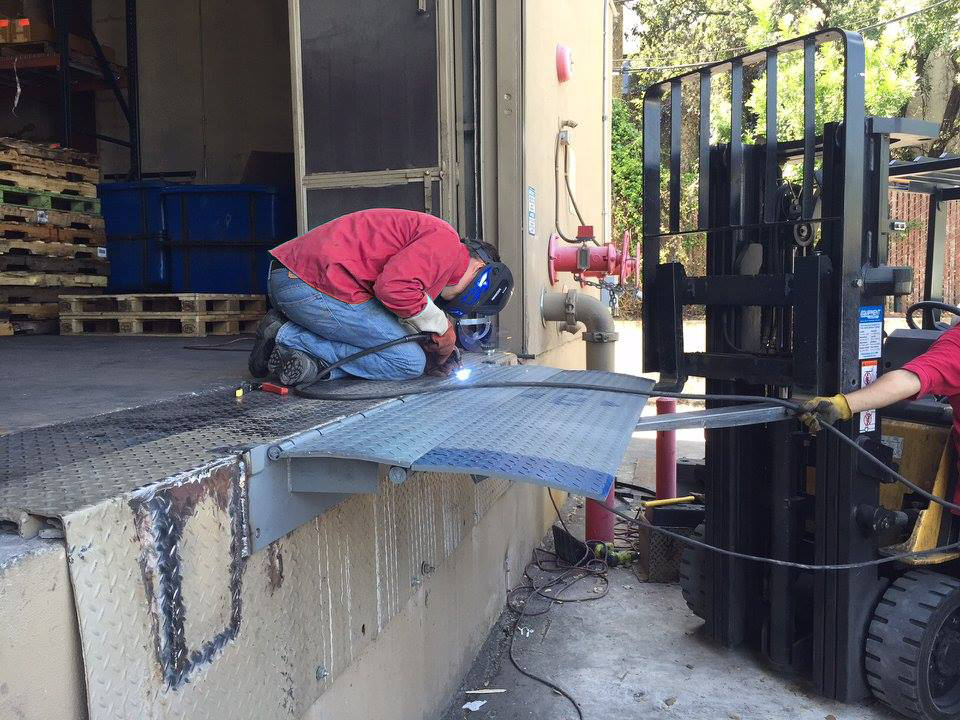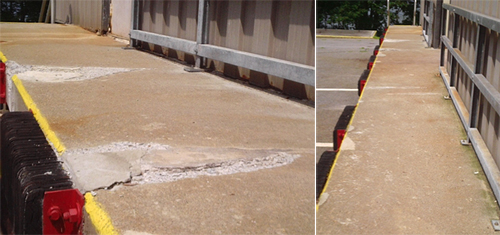Effective Dock Repair Techniques: Guaranteeing Structural Stability
Guaranteeing the architectural stability of anchors with reliable repair work techniques is vital for the durability and safety of aquatic facilities. Ultimately, selecting the best repair work materials, such as corrosion-resistant alloys and composite materials, is critical for durability.
Analyzing Dock Damages
Examining dock damages is an essential primary step in guaranteeing the structural honesty and safety and security of any docking facility. This initial evaluation entails a comprehensive evaluation to identify both noticeable and covert problems. Secret aspects to check out include the dock's structure, pilings, outdoor decking, and hardware. Each part should be scrutinized for indications of wear, rot, corrosion, or various other kinds of destruction that could endanger the structural integrity.
Architectural engineers or certified assessors normally carry out these analyses utilizing specialized tools and techniques. Undersea assessments could employ sonar equipment or remotely operated lorries (ROVs) to detect submerged damages. Over water, aesthetic evaluations are enhanced by utilizing moisture meters and other diagnostic tools to discover underlying concerns not immediately visible to the naked eye.

Deciding On Repair Materials
Choosing the appropriate repair materials is an essential action in the dock reconstruction procedure, one that straight affects the longevity and performance of the repaired framework. Product selection need to be driven by variables such as environmental conditions, load-bearing needs, and compatibility with existing dock components. Wood is a typical choice for docks due to its all-natural resilience and aesthetic allure. Selecting the appropriate kind of timber, such as pressure-treated lumber or naturally rot-resistant types like cedar or teak, is crucial to withstand marine environments.
In enhancement to timber, composite products are significantly prominent because of their longevity and reduced maintenance requirements. Compounds, normally made from a blend of plastic and wood fibers, offer excellent resistance to rot, insects, and UV damages. For metal anchors, picking corrosion-resistant alloys such as galvanized steel or marine-grade light weight aluminum is vital to prevent rust and make certain architectural stability in saline water conditions.
Epoxy materials and marine-grade sealants are essential for repairing splits and sealing joints, supplying a water-proof barrier and improving the dock's total strength. By carefully choosing high-quality materials, dock repair services can achieve lasting outcomes, thereby protecting versus future destruction and guaranteeing safe, trusted use.
Architectural Reinforcement Methods
Reliable structural reinforcement methods are critical in guaranteeing the stability and durability of dock repair services. One basic approach involves the usage of steel or composite reinforcement bars (rebar) within concrete frameworks. Rebar offers additional tensile toughness, protecting against splits and dispersing loads more equally. This approach is specifically effective for docks revealed to heavy tons or harsh ecological problems.
An additional necessary method is the application of fiber-reinforced polymers (FRP) These materials offer high strength-to-weight proportions and excellent resistance to deterioration, making them suitable for enhancing concrete or wooden docks. FRP can be used in sheets or strips and adhered with epoxy materials to improve structural integrity.
Bracing and anchoring systems additionally play a vital duty in architectural reinforcement. Cross-bracing, making use of steel or wooden light beams, can combat lateral pressures, decreasing swaying and motion. Anchoring systems, such as helical piers or driven heaps, supply a steady foundation by moving tons to deeper, more secure soil layers.
Lastly, the integration of load-distribution plates can help distribute weight more evenly throughout the dock's surface area, alleviating local stress and anxiety factors. These strategies collectively make certain that docks continue to be robust and secure, efficient in standing up to the rigors of their operational setting.
Advanced Repair Work Approaches

An additional advanced method includes undersea welding, which allows for repair work to be carried out without the demand to dewater the area. This method is specifically advantageous for attending to architectural issues in submerged dock elements, making sure marginal disturbance to procedures. Boosted welding techniques, combined with robot systems, supply precision and reliability, consequently expanding the life-span of the dock.
Additionally, cathodic security systems are executed to avoid corrosion in metallic dock frameworks. By using sacrificial anodes or amazed current systems, these strategies effectively minimize the electrochemical procedures that result in product deterioration.
Finally, progressed monitoring modern technologies, such as structural wellness tracking (SHM) systems, give real-time data on the problem of dock structures. These systems enable aggressive maintenance and prompt interventions, ultimately making certain the long-lasting architectural stability of the dock.
Maintenance and Avoidance
Maintenance and avoidance are fundamental principles that underpin the longevity and safety and security of dock structures. Normal assessments are paramount, permitting early discovery of deterioration, possible weaknesses, and ecological impacts. An aggressive approach, entailing routine look for corrosion, rot, and structural changes, reduces costly repair work and lengthens the dock's functional life.
Safety nets should include using protective coatings to go to my blog steel components to defend against rust and utilizing cured wood to stand up to decay. Additionally, making sure correct drainage and ventilation can protect against water accumulation, which is a typical source of structural deterioration. Integrating top quality materials and adhering to maker standards during building and fixing stages also play critical roles in enhancing longevity.

Training personnel in dock maintenance ideal techniques makes sure constant application of safety nets. Leveraging technological advances, such as drones for inspections and sensing units for real-time tracking, can even more enhance upkeep initiatives. By prioritizing maintenance and avoidance, dock proprietors can make certain architectural stability, operational safety and security, and economical administration over the dock's lifespan.
Verdict
To conclude, preserving the architectural stability of marine centers requires extensive dock repair methods. Comprehensive inspections making use of innovative tools uncover both noticeable and concealed problems, while the choice of appropriate fixing products enhances longevity. Carrying out structural support methods addresses stress factors efficiently. Advanced fixing methods, paired with routine upkeep methods, ensure the dock continues to be risk-free and operational under diverse ecological conditions. Embracing these strategies significantly lengthens the lifespan and performance of aquatic framework.
Making certain the structural integrity of docks with efficient repair service strategies is extremely important for the longevity and safety of marine facilities.Selecting the suitable repair work products is an essential action in the dock reconstruction process, one that directly influences the durability and performance of the fixed framework.Reliable architectural reinforcement methods are important in making certain the security and long life of dock repair work. By prioritizing maintenance and avoidance, dock proprietors can guarantee structural integrity, operational safety, and cost-effective management over the dock's lifespan.
In conclusion, keeping the architectural honesty of aquatic centers requires detailed dock fixing strategies.